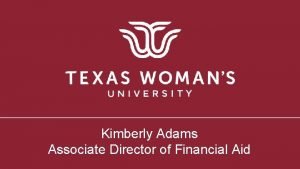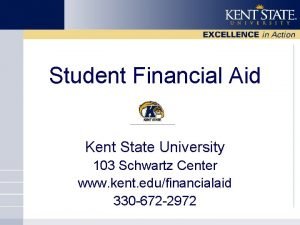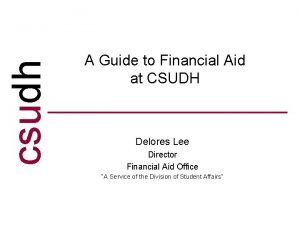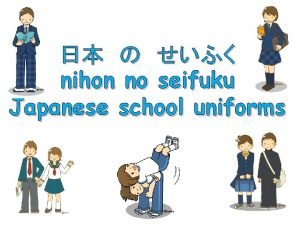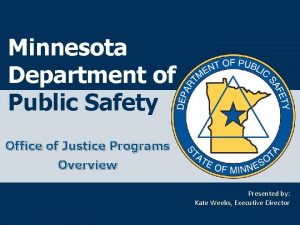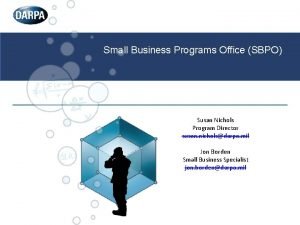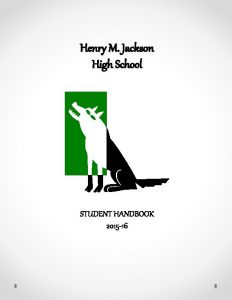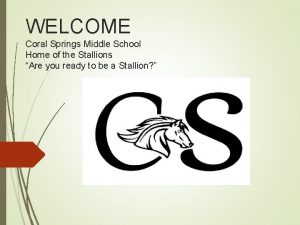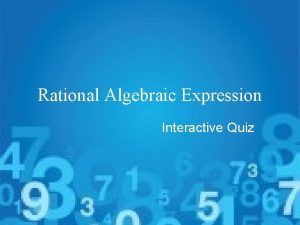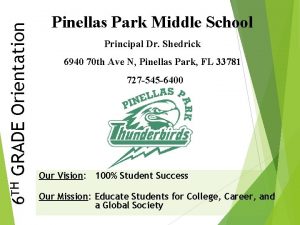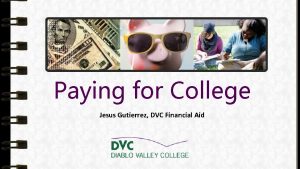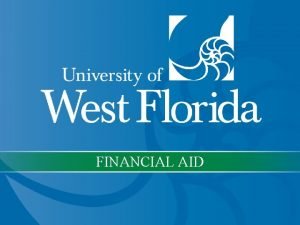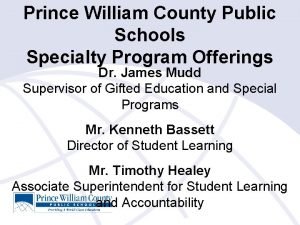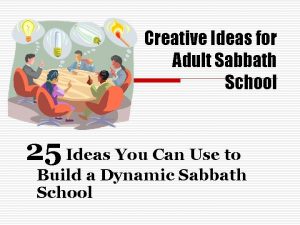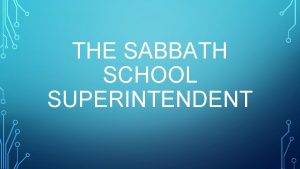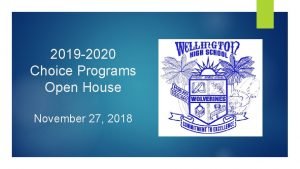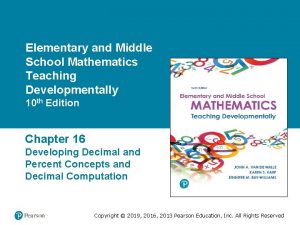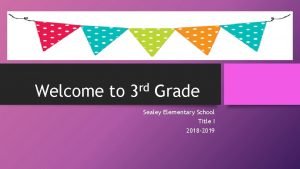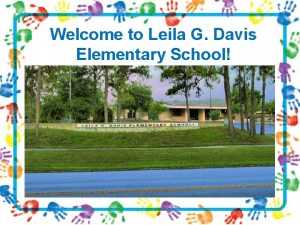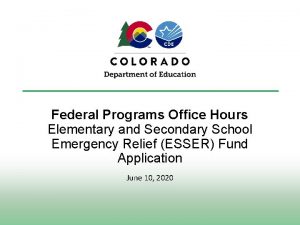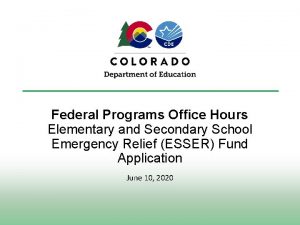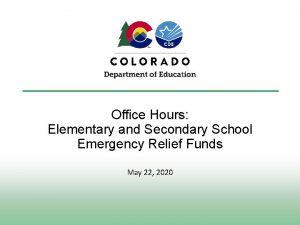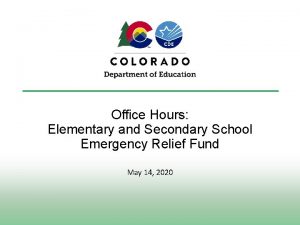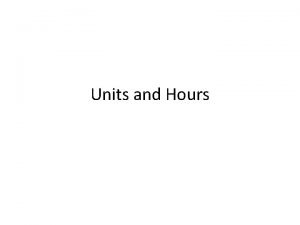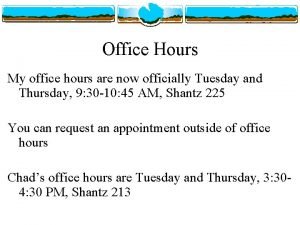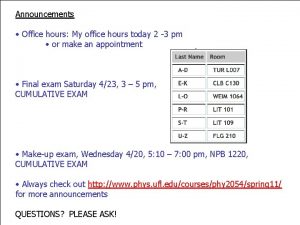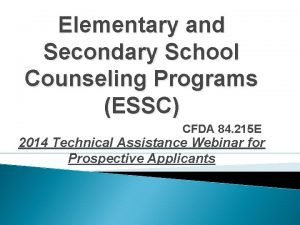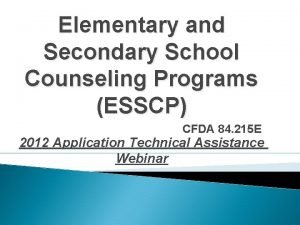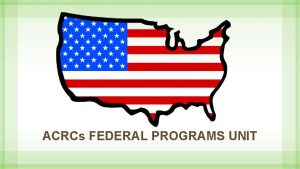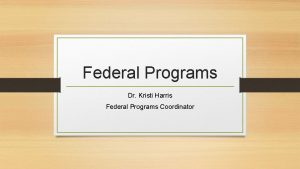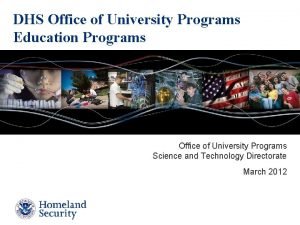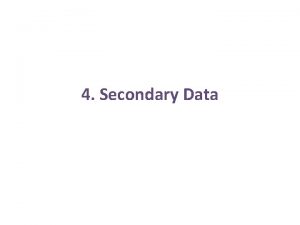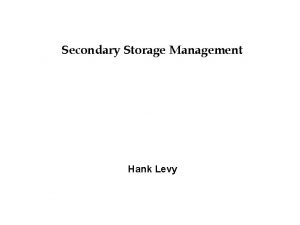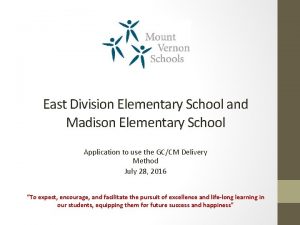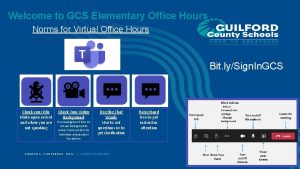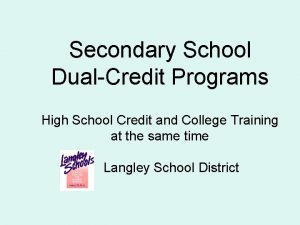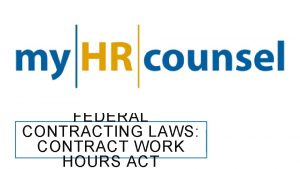Federal Programs Office Hours Elementary and Secondary School





























- Slides: 29

Federal Programs Office Hours Elementary and Secondary School Emergency Relief (ESSER) Fund Application and FAQs June 4, 2020

Agenda for Today • • • 2 Review of CARES Act grants Other Allowable Uses of ESSER-Formula Funds Considerations for Developing ESSER Budget FAQs Other Logistical Matters

Review of CARES Act Funds 3

Breakdown of ESSER Funds in CO • Funds flow from ED to SEAs, which then must allocate not less than 90 percent of the funding to LEAs, based on share of Title I in FY 2019. • SEAs may use up to 10% for state level activities for emergency needs as determined by the SEA to address issues related to COVID-19 • SEAs may use some funds for administration (0. 5%) and the rest for emergency needs to respond to the coronavirus as determined by the SEA. Colorado ESSER: $120, 993, 782 LEA’s 90%: $108, 894, 404 SEA’s 10%: $12, 099, 378 SEA Admin: $604, 969

Allowable Activities under ESSER • Any activity authorized under ESEA, IDEA, Perkins, Adult Education and Family Literacy, or Mc. Kinney-Vento • Coordination of preparedness and response efforts of local educational agencies with State, local, Tribal, and territorial public health departments, and other relevant agencies • Planning for and coordinating on long-term closures (including on meeting IDEA requirements, how to provide online learning, and how to provide meals to students) • Staff training and professional development on sanitation and minimizing the spread of infectious disease; purchasing supplies to sanitize and clean facilities • Purchasing educational technology (hardware, software, and connectivity) for students, that aids in the regular and substantive educational interaction between students and their instructors, which may include assistive or adaptive technology • Mental health services and supports • Summer learning and supplemental after-school programs • Discretionary funds for school principals to address the needs of their individual schools • Other activities that are necessary to maintain the operation and continuity of services in LEAs and to continuing the employment of their existing staff 5

Allowable Activities Under Other Federal Education Programs 6

Elementary and Secondary Education Act (ESEA) Grants Ordinarily required under ESEA grants, but not under ESSER: • Based on a Comprehensive Needs Assessment • Supplemental supports & services • Serving eligible schools and students Still required under ESSER: • Reasonable and Necessary Reminder: ESSER Funds were calculated using LEAs’ Title I, Part A funding formula. However, ESSER Funds are not Title I funds. There are important flexibilities related to ESEA-type activities under ESSER. Funding considerations • LEAs can use the ESSER funds to cover declines in state/local funds. However, ESSER will provide only temporary support and will not be a permanent replacement for lost state funds. – avoid the funding cliff! • SNS for Titles IA, IVA do not implicate federal funds, only state/local. However, Title IC (Migrant Education) and Title IIIA do reference federal funds, so be careful, these could present SNS issue. 7

Title I, Part A – Allowable Activities Examples The purpose of Title I, Part A is to provide all children significant opportunity to receive a fair, equitable, and high-quality education, and to close educational achievement gaps. Examples of common Title I, Part A Activities: • Delivering enhanced instruction for at-risk children (e. g. , hiring teachers, interventionists to meet student needs) • Offering afterschool, enriched, and/or accelerated academic programs • Providing behavior, social & emotional supports • School-based improvement planning • Meaningful parent and family engagement 8 Good to know! If exercising ESEA “Title I-like” activities, things like Title I designation, parent engagement set aside, and CS/TS program requirements do not apply.

Title I, Part D – Allowable Activities Examples The purpose of Title I, Part D is to improve educational services for children and youth who are neglected or delinquent so they have the opportunity to meet state academic content and achievement standards; successfully transition from institutionalization to further education or employment; and prevent youth from dropping out of school. Examples of common Title I, Part D Activities: • Programs that serve children and youth returning to local schools from correctional facilities to assist in the transition to school environment and complete education • Dropout prevention programs which serve at-risk children and youth, including pregnant and parenting teens, children and youth in juvenile justice system • Health and social services, e. g. , day care, drug and alcohol counseling, and mental health services, if it will help students progress 9

Title II, Part A – Allowable Activities Examples The purpose of Title II, Part A is to increase student achievement on challenging state academic standards by improving the quality and effectiveness of teachers, principals, and other school leaders, and providing low-income and minority students more equitable access to effective teachers, principals, and other school leaders. Examples of common Title II, Part A Activities: • Academic/instructional coaching supports for educators • Professional learning supports for teachers, school leaders • Development and support for educational leadership pipelines • Strategies to attract and retain teachers, including stipends and differential pay to meet high-need subjects/schools 10 Good to know! If exercising ESEA “Title II-like” activities, things like prioritization of funding, SNS, and meeting ESSA’s definition of PD do not apply.

Title III, Part A – Allowable Activities Examples The purpose of Title III, Part A is to improve and enhance the education of English learners (ELs) in becoming proficient in English, as well as meeting challenging state academic standards. Examples of common Title III, Part A Activities: • Upgrading English Language Development (ELD) program objectives, curricula, instructional materials, and effective instructional activities • Providing community participation programs, family literacy services, and parent outreach and training activities to EL students and their families • Providing tutoring and intensified instruction for EL students • Offering early college high school or dual/concurrent enrollment programs or courses designed to help ELs achieve in postsecondary education Good to know! If exercising ESEA “Title III-like” activities, consider focused activities to expand or enhance existing language development programs to address unique needs of ELs during school closures/remote learning. 11

Title IV, Part A – Allowable Activities Examples The purpose of Title IV, Part A is to increase the capacity of districts, schools, and local communities to provide all students with access to a well-rounded education, improve school conditions for student learning, and improve the use of technology in order to improve the academic achievement and digital literacy of all students. Examples of common Title IV, Part A Activities: 12 Good to know! If exercising ESEA “Title IV-like” activities, things like content area alignment, and percentage requirements do not apply.

Title V, Part A – Allowable Activities Examples The purpose of Title V, Part B is intended to address the unique needs of rural school districts that frequently lack the personnel and resources needed to compete effectively for Federal competitive grants and receive formula grant allocations in amounts too small to be effective in meeting their intended purpose. The Rural, Low-Income School (RLIS) program [ESSA, Title V, Part B, Subpart 2] program targets rural LEAs that serve large numbers of low-income students. Title V activities are allowable if they are allowable under Title I, Part A, Title II, Part A, Title III, Part A, and/or Title IV Part A. Examples of common Title IV, Part A Activities: • ELA/Math Interventionist • Conferences or PD trainings for teachers, admin or district staff • Technology or equipment purchases • Stakeholder involvement activities 13

Mc. Kinney-Vento Act Core Components • The intent of the Mc. Kinney-Vento Education for Homeless Children and Youth program is to remove all educational barriers facing children and youth experiencing homelessness, with an emphasis on educational enrollment, attendance and success. Specific provisions ensure the enrollment, accessibility, and educational stability for students lacking a fixed, regular, and adequate nighttime residence. Examples of Allowable Activities • Tutoring to support gaps in learning • The purchase of technology, educational materials, and school supplies • Transportation to support emergency needs, in-person instruction, and equitable access 14

Perkins Career and Technical Education (CTE) Act Core Components • Providing supports/services in career or technical education Examples of allowable activities • Salary/benefits to support CTE • Professional learning opportunities • CTE educators • Materials/Supplies in support of CTE activities • Software/Technology in support of CTE activities 15

Adult Education and Family Literacy Act (AEFLA) Core Components • Assist adults, including English learners, to become literate and obtain the knowledge and skills necessary for employment and economic self- sufficiency, including attaining a high school credential and transitioning to postsecondary education and training • Assist adults who are parents or family members to obtain the education and skills that— • are necessary to becoming full partners in the educational development of their children; and • lead to sustainable improvements in the economic opportunities for their family; Examples of Allowable Activities • Salary/benefits to support instructors • Family literacy activities that include the four required components • High school equivalency preparation for students ages 17+ that are not currently enrolled in secondary school • Materials/Supplies in support of adult education services • Software/Technology in support of adult education services • Professional development for adult education instructors 16

Individuals with Disabilities Education Act (IDEA) Core Components • IDEA Activities are Allowable Examples of Allowable Activities • Support for special education students in general education to address COVID slide • Compensatory education 17

Considerations as You Develop Your ESSER Budget 18

To Streamline Application Approval… • Provide a rationale for identified areas of need, e. g. , if you need technology for virtual learning, indicate what created that need. You don’t need to do this for every budget line item if a need has already been established. • Tell us how many and for whom the identified equipment, resources, or supports are provided. If equipment, indicate how much each device is and the number purchased. • If reimbursing for a past activity, confirm that the date of purchase/cost incurred was on or after March 13, 2020. • Be intentional with Program Codes and Object Codes. Reviewers will be checking that these align with budgeted activity. 19

Frequently Asked Questions 20

Non-public Schools FAQ Q. How do we account for students that attend non-public schools within our district boundary but reside outside of our district? • A. LEA will need to consult with neighboring districts to determine if the student resides in a Title I school boundary to be counted in the proportionate share calculation. Q. How do we determine the number of children who are from low-income families and attend private school for the purpose of calculating the proportionate share under Title I, Part A? A. Section 1117(c)(1) LEAs with four methods to select from to determine the number of children who are from low-income families and attend private school for the purpose of calculating the proportionate share under Title I, Part A. When deciding the standard to apply when determining the low-income status of a student attending private school, the local educational agency has the final authority to determine which of the following methods is comparable and appropriate: • (1) the same measure of low income used to count public school children (i. e. free or free and reduced); • (2) the results of a survey that, to the extent possible, protects the identity of families of private school students, and allowing such survey results to be extrapolated if complete actual data are unavailable; • (3) the low-income percentage of each participating public school attendance area to the number of private school children who reside in that school attendance area; or • (4) an equated measure of low income correlated with the measure of low income used to count public school children. 21 2020 -2021 Income Eligibility Guidelines

Non-public Schools FAQ cont. Q. Will we use the same consultation form that we use for the Consolidated Application for the ESSER fund? A. No. LEAs will need to capture the consultation process using the ESSER Non-public Schools Certification form. LEAs and non-public schools will certify that a consultation process has occurred, and an agreement has been reached with respect to the ESSER funds. Q. When will we be required to submit the ESSER Non-public Schools Certification form? A. The ESSER Non-public School Certification form is due on or before December 31, 2020. Certifications will be sent to esserapplications@cde. state. co. us. • 22

FAQs Cont. • Q. Does the LEA application for ESSER funds require a presentation to the local school board or signature of the board prior to submittal of the application? • The LEA is required to follow local policies and protocols for obtaining grant signature authority, informing the school board of grant funding, and uses of funds, as well as informing the local board of the decision to apply for ESSER funds and the plans for the use of funds. Therefore, the ESSER fund application can be submitted with the signature of the superintendent or district leadership authorized to sign grant applications on behalf of the district in accordance to the LEA's local policy. • Q. Can a district facing severe financial crisis, due to declining state/local funds, use federal funds to provide basic, general education services? • Consider using CARES Relief Funds first. LEAs received per pupil allocations under CARES Relief Funds (CRF) by Executive Order from the Governor for this purpose. After CFR funds, consider using ESSER funds for this purpose. If the district still has financial needs after those funding sources have been considered and used, contact the ESEA Regional Contact(s) to consider various allowable activities under Titles I-IV. 23

FAQs Continued • Q. How should LEAs determine allocations for charter schools? • The CARES Act does not directly address allocation of district ESSER funds to charter schools that are not standalone LEAs. The clear legislative intent, however, is to benefit all public schools and students regardless of school type. • CDE asks that districts include their charter schools on equal footing with traditional schools when determining the most important educational needs as a result of COVID-19, consistent with the intent of the CARES Act, see CARES Act Sec. 18003(d)(3), and the intent of Colorado law, see C. R. S. 22 -30. 5 -112(3). 24

More FAQs here! • We are continually working to answer questions and post them here: http: //www. cde. state. co. us/fedprograms/covidcaresactfaq 25

Other Logistical Matters 26

Requesting Reimbursement • Request for Funds (RFF) • Formsite • Available once LEA receives final approval • Anticipate reporting more information when completing the RFF • Reporting • USDE has not released the reporting requirements. Each LEA will certify that it will comply with reporting requirements. • CDE will do our best to provide as much time as we can to respond to reporting requirements. 27

Questions? • Online system and application submittal: Michelle Prael at prael_m@cde. state. co. us or Brittany Jimenez at jimenez_b@cde. state. co. us • Allowable uses of funds: Nazie Mohajeri-Nelson at mohajerinelson_n@cde. state. co. us or De. Lilah Collins at collins_d@cde. state. co. us or your ESEA Regional Contacts: https: //www. cde. state. co. us/fedprograms/regionalcontactsp age 28

Remaining Questions? Topics for Future Office Hours? 29
 Disadvantages of waterfall model in software engineering
Disadvantages of waterfall model in software engineering Twu pioneer portal webadvisor
Twu pioneer portal webadvisor Kent state financial aid office hours
Kent state financial aid office hours Csudh financial aid phone number
Csudh financial aid phone number Instructor office hours
Instructor office hours Japan elementary school uniform
Japan elementary school uniform Special curricular programs at the secondary level
Special curricular programs at the secondary level Navy international program office
Navy international program office Office of justice programs mn
Office of justice programs mn Darpa small business programs office (sbpo)
Darpa small business programs office (sbpo) Henry m jackson high school bell schedule
Henry m jackson high school bell schedule Ribault middle school uniforms
Ribault middle school uniforms Coral springs middle
Coral springs middle If maribel a groupmate of angelo in number 2
If maribel a groupmate of angelo in number 2 Pinellas park middle school
Pinellas park middle school Office and factory
Office and factory Financial aid dvc
Financial aid dvc Www southeastern edu financialaid
Www southeastern edu financialaid Uwf federal school code
Uwf federal school code How to make sabbath school interesting
How to make sabbath school interesting Speciality program pwcs
Speciality program pwcs Sabbath school ideas
Sabbath school ideas Sabbath school programs for superintendent
Sabbath school programs for superintendent Mypbchoiceapp
Mypbchoiceapp Elementary and middle school mathematics 10th edition
Elementary and middle school mathematics 10th edition Ubujan elementary school
Ubujan elementary school William beanes elementary
William beanes elementary Mackay elementary school tenafly
Mackay elementary school tenafly Sealey elementary
Sealey elementary Leila davis elementary
Leila davis elementary

